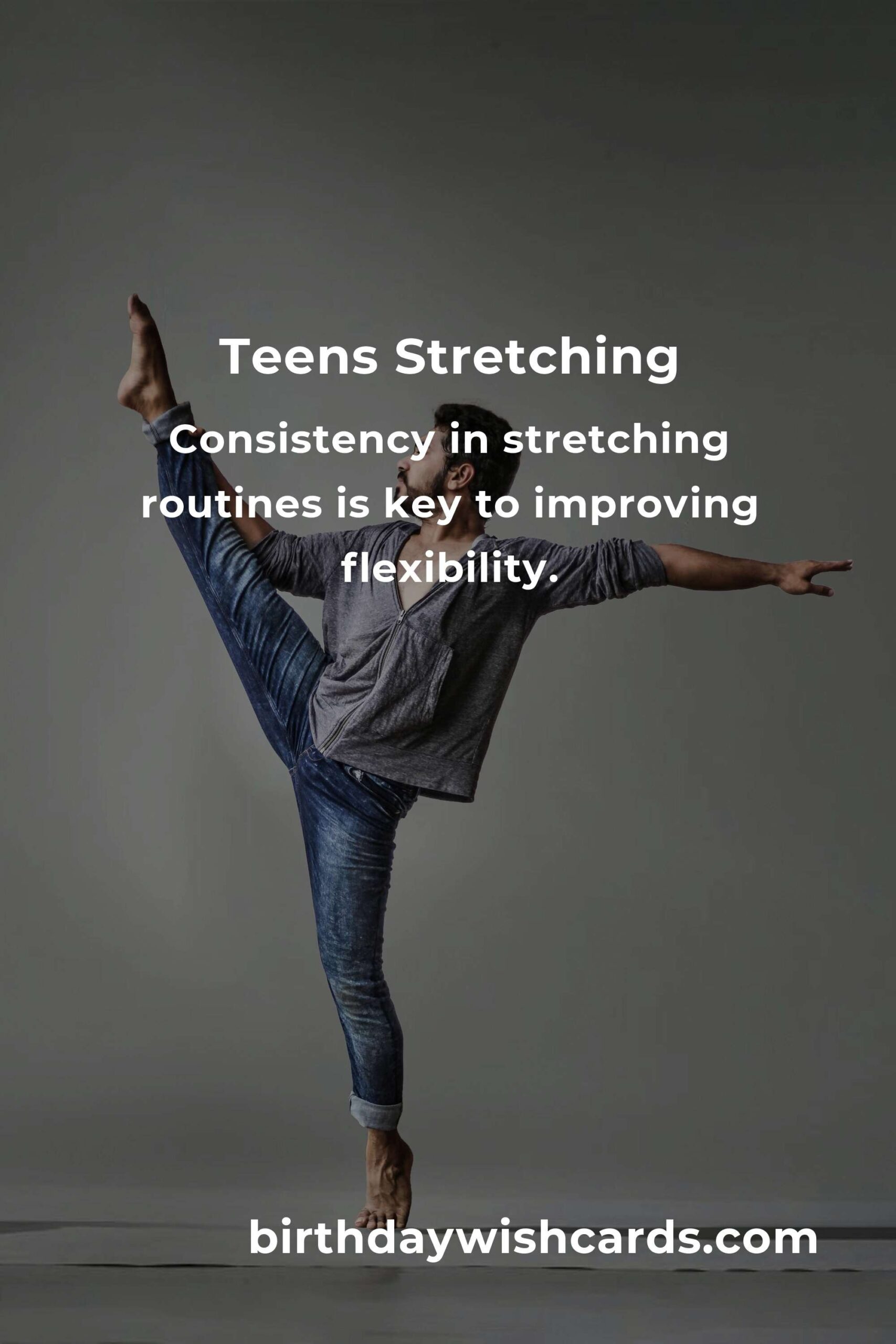
In today’s fast-paced world, maintaining flexibility is essential for teens. Whether you’re an aspiring athlete or simply looking to stay active, developing flexibility can enhance performance, prevent injuries, and promote overall well-being.
Why is Flexibility Important?
Flexibility refers to the range of motion available in your joints and muscles. For teens, it plays a crucial role in ensuring that the body can move freely and efficiently. Improved flexibility can lead to better posture, reduced muscle tension, and even a decrease in the risk of injuries during physical activities.
Benefits of Flexibility for Teens
There are numerous benefits of flexibility for teenagers, including:
- Enhanced Athletic Performance: Flexible muscles and joints allow for a greater range of motion, which can improve performance in sports like gymnastics, dance, and track.
- Injury Prevention: Stretching keeps muscles supple and reduces the risk of strains and sprains.
- Improved Posture: Flexibility helps maintain a balanced alignment, reducing the likelihood of developing posture-related issues.
- Stress Reduction: Stretching exercises can be a relaxing way to unwind, promoting mental clarity and reducing stress levels.
Getting Started with a Flexibility Routine
Embarking on a flexibility routine doesn’t have to be complicated. Here are some simple steps to get started:
Warm-Up
Before you begin stretching, it’s crucial to warm up your body. Engage in light aerobic activities such as jogging in place, jumping jacks, or brisk walking for about 5-10 minutes to increase blood flow to your muscles.
Basic Stretches for Beginners
Here are some basic stretches that can help improve flexibility:
- Hamstring Stretch: Sit on the floor with one leg extended and the other bent. Reach towards your toes of the extended leg to stretch the hamstrings.
- Quadriceps Stretch: Stand on one leg and pull the opposite foot towards your buttocks, holding your ankle to stretch the quadriceps.
- Shoulder Stretch: Bring one arm across your chest and use the other arm to press it gently towards your body to stretch the shoulder muscles.
- Cat-Cow Stretch: On your hands and knees, alternate between arching your back upwards and dropping your belly downwards to stretch the spine.
Tips for Successful Stretching
To make the most out of your stretching routine, consider the following tips:
- Breathe Deeply: Breathing helps relax your muscles and increases the effectiveness of your stretches.
- Avoid Overstretching: Stretch to the point of mild tension, not pain.
- Consistency is Key: Aim to stretch at least three times a week to see improvements in flexibility.
- Listen to Your Body: If a stretch feels uncomfortable, ease up to prevent any potential injuries.
Incorporating Flexibility into Daily Life
Integrating stretching into your daily routine can be simple and rewarding. Consider stretching after waking up, during study breaks, or as part of your cool-down routine after exercise. Remember, flexibility is a journey, and with dedication and consistency, you can achieve greater flexibility over time.
Conclusion
Flexibility is a valuable component of physical health for teens. By starting with simple stretching routines and maintaining consistency, you can enhance your athletic performance, prevent injuries, and improve overall well-being. Begin your flexibility journey today and experience the benefits firsthand.
Flexibility is essential for teens to enhance performance and prevent injuries.
Improved flexibility leads to better posture and reduced muscle tension.
Stretching can reduce stress levels and promote mental clarity.
Basic stretches like hamstring and quadriceps stretches are effective for beginners.
Consistency in stretching routines is key to improving flexibility.
#Flexibility #Teens #Stretching #PhysicalHealth #Wellbeing

